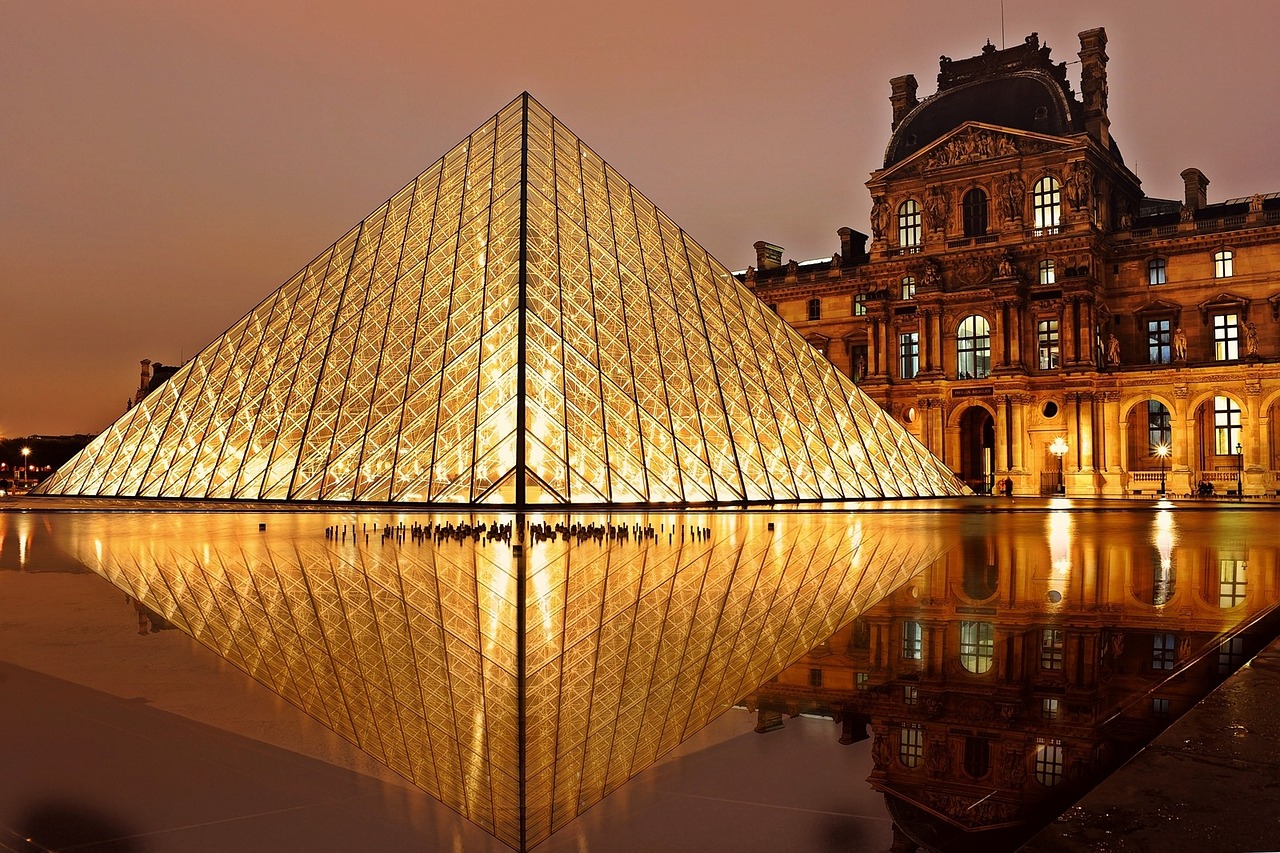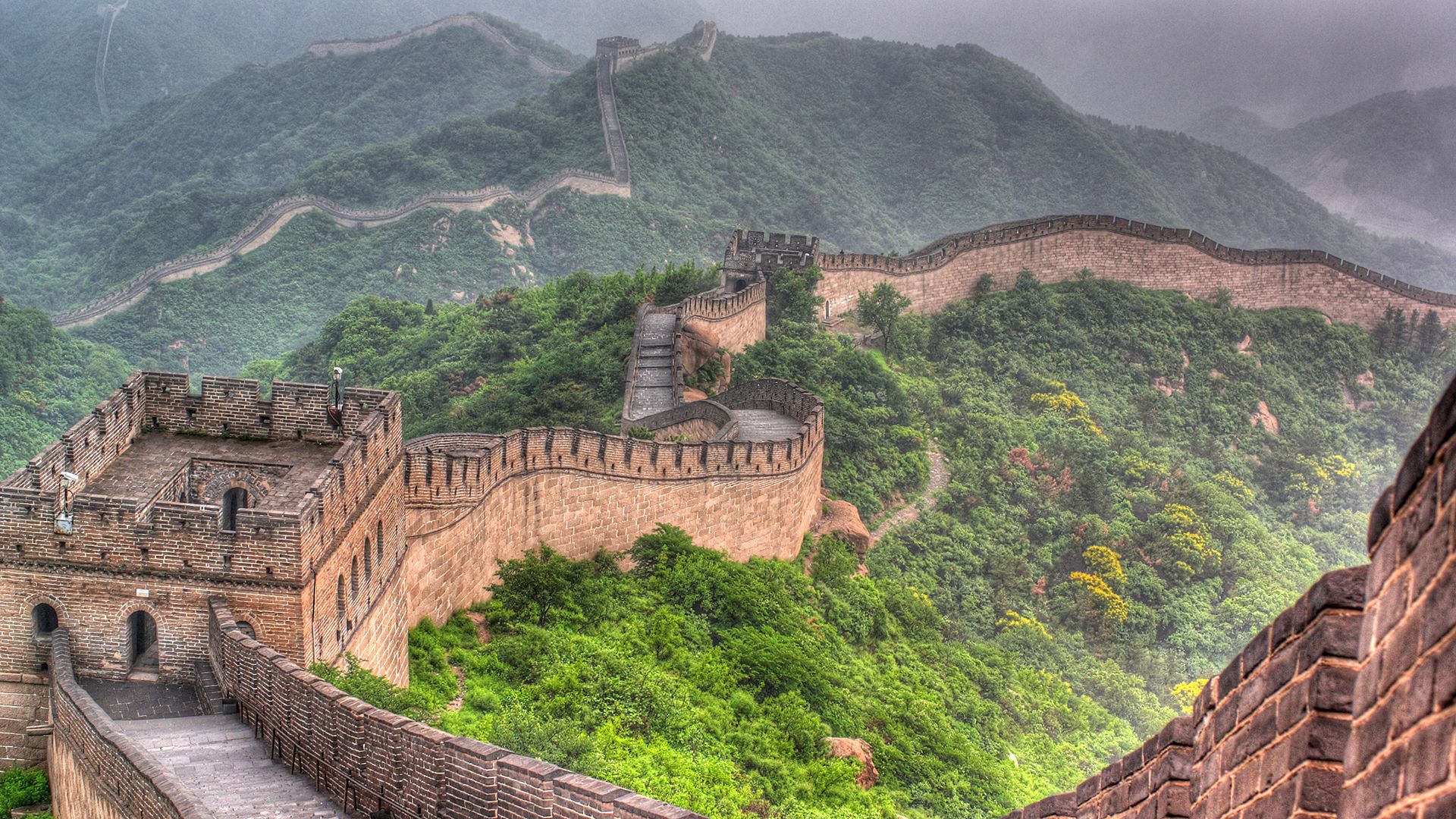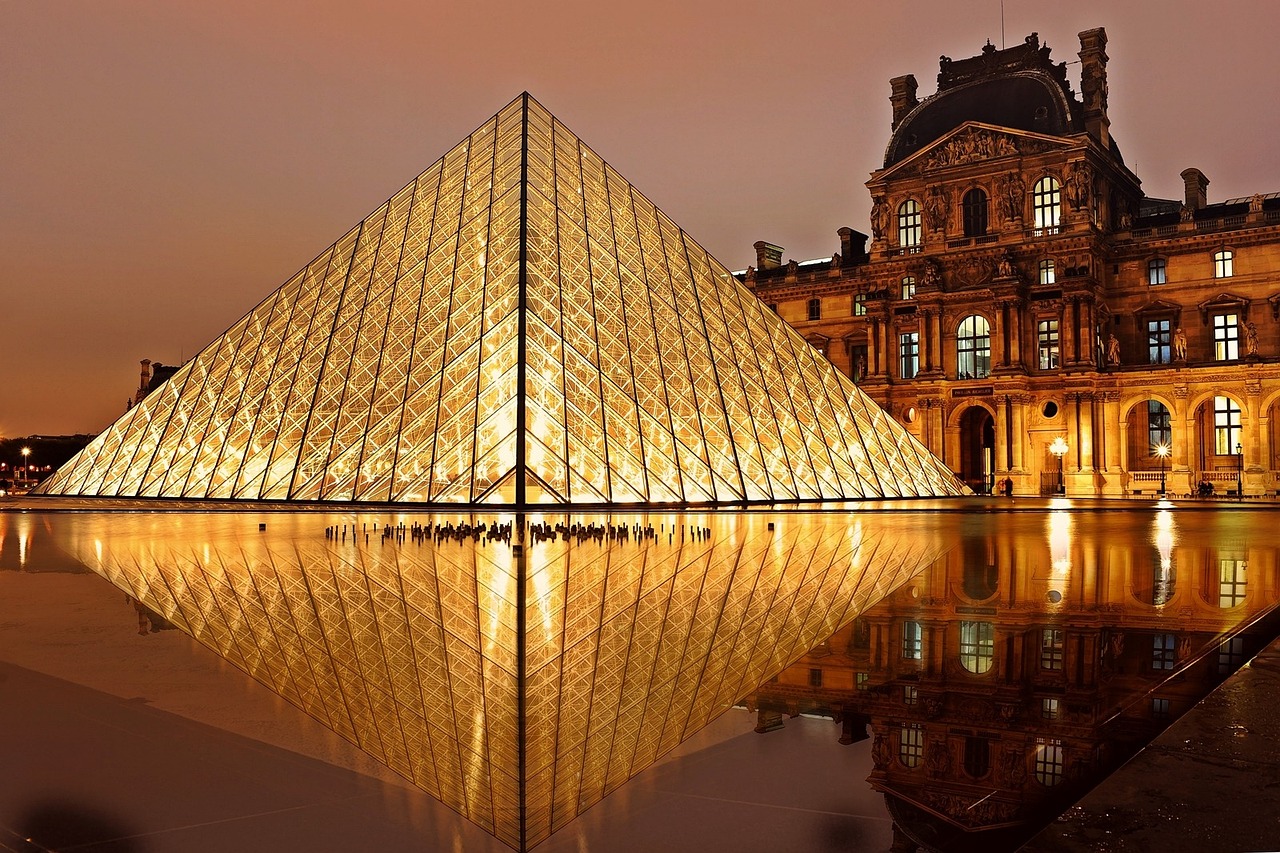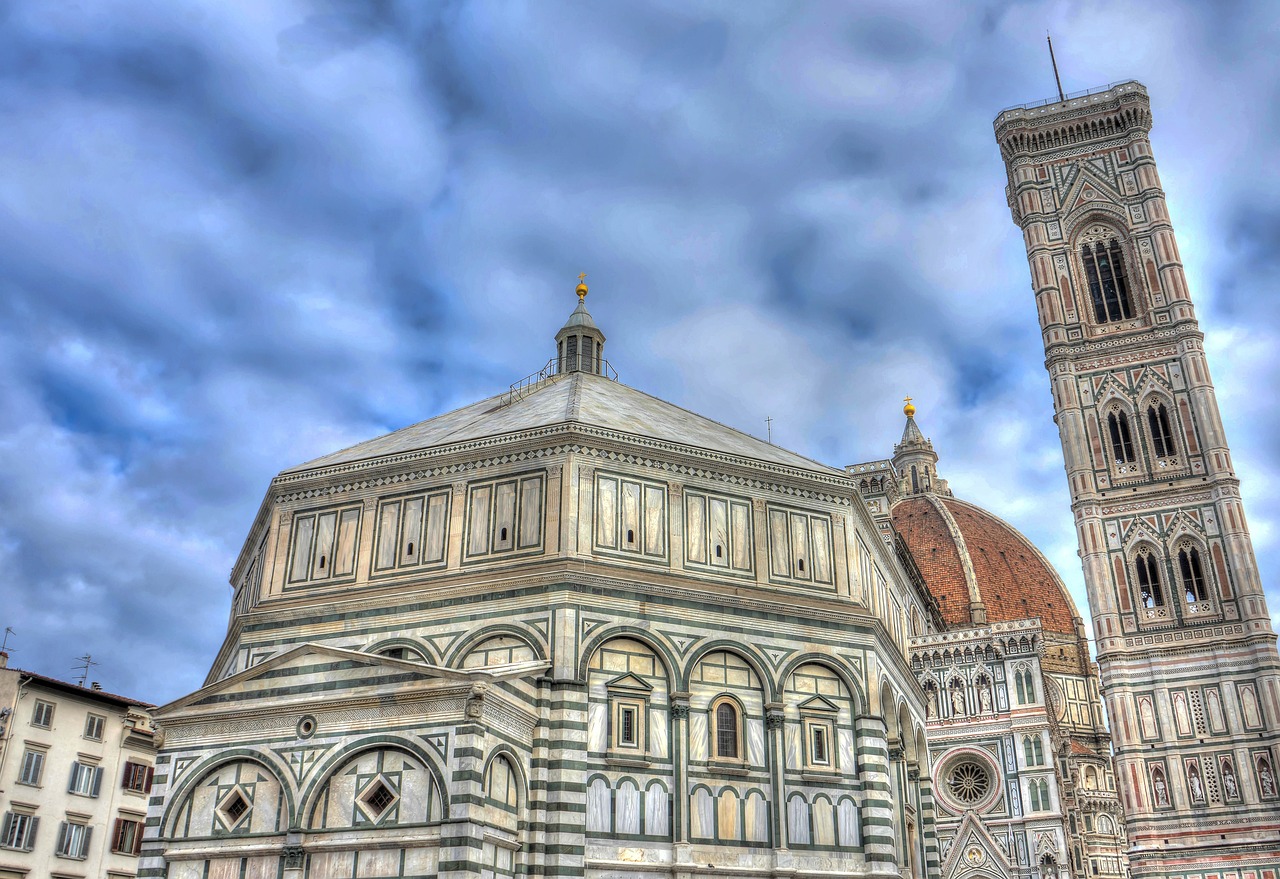Table of Contents
Architecture is more than just the construction of buildings; it’s a form of artistic expression that shapes our cities and landscapes. Over the centuries, visionary architects have created structures that not only serve as functional spaces but also stand as enduring symbols of human achievement and innovation. In this article, we embark on a global tour to celebrate some of the world’s most iconic and awe-inspiring buildings, each of which has left an indelible mark on architectural history.
Architecture, at its core, transcends the realm of construction to become a profound artistic language that leaves an indelible mark on the tapestry of our cities and landscapes. It encapsulates the essence of human ingenuity, reflecting our aspirations, cultures, and visions. As we embark on this global tour, we are about to journey through some of the world’s most iconic and awe-inspiring buildings, each a testament to the power of architecture as a living, breathing art form:
The Great Pyramids of Giza, Egypt: Our architectural odyssey begins with the timeless wonder of the Great Pyramids. These colossal structures, built over 4,500 years ago, showcase the engineering genius of ancient Egypt. They stand as eternal monuments to pharaohs and as enduring symbols of human ambition.
The Parthenon, Greece: Nestled atop the Athenian Acropolis, the Parthenon is an epitome of classical architecture. Dedicated to the goddess Athena, this Doric temple exemplifies the perfection of proportions and symmetry that define ancient Greek architecture.
The Colosseum, Italy: In the heart of Rome, the Colosseum tells the story of ancient Roman engineering prowess. This amphitheater, where gladiators once clashed, is a colossal testament to the architectural innovation of its time.
The Taj Mahal, India: As we venture to India, the ethereal beauty of the Taj Mahal unfolds. This white marble mausoleum, built in the 17th century, is a testament to the enduring love of Emperor Shah Jahan for his queen, Mumtaz Mahal. Its intricate symmetry and delicate craftsmanship make it a jewel of Mughal architecture.
The Eiffel Tower, France: Paris presents us with the iconic Eiffel Tower, a triumph of 19th-century engineering. This lattice iron structure, originally met with mixed reviews, has become an unmistakable symbol of France and the romance of Paris.
The Sydney Opera House, Australia: On the shores of Sydney Harbor, the Sydney Opera House is an architectural marvel that defies convention. Its distinctive shell-like forms, designed by Jørn Utzon, meld seamlessly with the harbor’s natural beauty and have made it an icon of 20th-century architecture.
Fallingwater, USA: Designed by Frank Lloyd Wright, Fallingwater is a masterpiece of organic architecture. This house, perched over a waterfall in Pennsylvania, epitomizes the harmony between human habitation and nature. It’s a celebration of the built environment blending seamlessly with its surroundings.
The Burj Khalifa, UAE: The modern marvel of the Burj Khalifa in Dubai reflects the audacity of contemporary architecture. Soaring to unprecedented heights, this skyscraper redefines urban landscapes and stands as a symbol of human ambition in the 21st century.
The Sagrada Família, Spain: Antoni Gaudí’s magnum opus, the Sagrada Família in Barcelona, is a testament to the fusion of architecture and art. This ongoing project combines Gothic and Art Nouveau influences, creating a transcendent space that evokes spiritual awe.
The Beijing National Stadium (Bird’s Nest), China: As we conclude our journey in Beijing, the Bird’s Nest captures the spirit of 21st-century architecture. This stadium, designed for the 2008 Olympics, represents the harmony of form and function, becoming a global icon of sports and design.
In each of these architectural wonders, we find more than just buildings; we find the essence of human creativity, innovation, and the enduring quest for beauty and meaning in the spaces we inhabit. These structures stand as timeless reminders of our collective journey through history, serving as windows to the cultures, aspirations, and dreams of the people who brought them to life. They inspire us to see architecture not merely as bricks and mortar but as a profound expression of the human spirit.
For a comprehensive look at this subject, we invite you to read more on this dedicated page: 14 Famous Monuments and Memorial Buildings Around the World …
The Eiffel Tower, Paris, France
No list of architectural icons would be complete without the Eiffel Tower. Designed by Gustave Eiffel and completed in 1889 as the centerpiece of the 1889 World’s Fair, this towering iron structure has become synonymous with the City of Light. Its intricate lattice design and soaring height of 324 meters (1,063 feet) have made it not only an engineering marvel but also an enduring symbol of France and a global icon of romance.
The Eiffel Tower stands as a testament to the marriage of engineering excellence and artistic vision, making it a true architectural icon recognized worldwide. Its significance extends far beyond its structural grandeur, and here’s a deeper exploration of its enduring legacy:
Architectural Pioneering: Gustave Eiffel’s design for the tower marked a watershed moment in architectural history. Its distinctive lattice structure was an innovative departure from the architectural norms of its time. The Eiffel Tower became a pioneer of modernist engineering, embracing both form and function.
Global Landmark: While rooted in France, the Eiffel Tower has transcended its geographical boundaries to become a global cultural symbol. Its iconic silhouette is instantly recognizable, serving as an emblem of not only Paris but also of France itself.
Romantic Symbol: Few structures in the world evoke the sentiment of romance as profoundly as the Eiffel Tower. Its breathtaking views of the city, particularly from its observation decks, have made it a quintessential destination for lovers from around the world. It has witnessed countless marriage proposals and declarations of love.
Artistic Inspiration: The Eiffel Tower has inspired countless artists, writers, and filmmakers. It has appeared in numerous works of literature, paintings, and films, solidifying its status as a cultural icon that transcends architecture.
Structural Marvel: At the time of its completion, the Eiffel Tower was the tallest man-made structure in the world, a title it held for 41 years. Its iron framework was a feat of engineering, and it showcased the possibilities of metal construction on a monumental scale.
Enduring Relevance: Over a century after its construction, the Eiffel Tower remains as relevant and captivating as ever. Its observation decks offer panoramic views of Paris, allowing visitors to appreciate the city’s rich history and architectural beauty.
Icon of Progress: The Eiffel Tower is a symbol of progress and modernity. It was initially met with some skepticism and criticism but has since come to represent the triumph of innovation and human achievement.
Cultural Hub: Beyond its architectural significance, the Eiffel Tower serves as a cultural hub. It hosts exhibitions, events, and celebrations, connecting people from various walks of life and backgrounds.
Lighting Spectacle: The tower’s nightly illumination with thousands of sparkling lights has become an enchanting spectacle, particularly during special occasions and holidays. It adds to the romantic allure of the structure.
Preservation and Restoration: The ongoing care and restoration efforts for the Eiffel Tower reflect its enduring importance to the people of France and the world. It ensures that this iconic landmark continues to inspire and captivate future generations.
In conclusion, the Eiffel Tower’s significance extends far beyond its iron structure and towering height. It embodies the ideals of progress, romance, and cultural significance. As an enduring architectural icon, it serves as a reminder of the boundless possibilities of human creativity and engineering prowess, captivating the hearts and minds of all who gaze upon it.
Should you desire more in-depth information, it’s available for your perusal on this page: Eiffel Tower | History, Height, & Facts | Britannica

The Sydney Opera House, Sydney, Australia
Perched on the shores of Sydney Harbour, the Sydney Opera House is a masterpiece of modern architecture. Designed by Danish architect Jørn Utzon and completed in 1973, its distinctive shell-like structure is instantly recognizable. This UNESCO World Heritage-listed building is not just a performing arts venue but a cultural beacon that has drawn artists and visitors from around the world for decades.
The Sydney Opera House, a resplendent icon on the shores of Sydney Harbour, stands as a testament to the enduring power of architectural vision and creativity. Designed by the visionary Danish architect Jørn Utzon and unveiled to the world in 1973, this architectural masterpiece transcends mere functionality; it is a symbol of artistic innovation and cultural significance. Let’s delve further into what makes the Sydney Opera House a true marvel of modern architecture:
1. Iconic Silhouette: The Sydney Opera House’s silhouette is instantly recognizable the world over. Its series of distinctive shell-like structures, resembling billowing sails or seashells, have become an enduring symbol of Sydney and Australia itself. This iconic form is not only a marvel of engineering but also an embodiment of artistic ingenuity.
2. Engineering Marvel: The construction of the Sydney Opera House was a feat of engineering prowess. The unique shell structures presented formidable challenges, which were met with innovative solutions. The use of precast concrete ribs, a first in architectural history, allowed for the creation of the intricate shell forms. Utzon’s innovative approach to construction remains an inspiration to architects and engineers globally.
3. Cultural Significance: Beyond its architectural splendor, the Sydney Opera House holds immense cultural significance. It has evolved into a cultural beacon, a place where creativity and artistic expression thrive. The Opera House hosts a diverse range of performances, from opera and ballet to theater and contemporary music, making it a vibrant hub for the arts.
4. UNESCO World Heritage Status: The Sydney Opera House’s cultural and architectural importance was officially recognized in 2007 when it was designated a UNESCO World Heritage site. This prestigious status underscores its global significance as an architectural and cultural treasure.
5. Architectural Innovation: Utzon’s design for the Sydney Opera House was groundbreaking in its approach to form and function. The use of a modular system and the integration of natural elements, such as water features and open spaces, demonstrated a deep understanding of the relationship between architecture and the environment.
6. Cultural Exchange: The Sydney Opera House has long served as a platform for cultural exchange. It has welcomed artists and performers from around the world, fostering international collaboration and dialogue. This cultural exchange enriches the lives of both locals and visitors alike.
7. Community Engagement: Beyond its role as a global cultural icon, the Sydney Opera House engages with the local community. It offers educational programs, outreach initiatives, and accessibility efforts to ensure that the arts are accessible to all segments of society, nurturing the next generation of artists and enthusiasts.
8. Vibrant Surroundings: The Opera House is set against the stunning backdrop of Sydney Harbour, enhancing its visual appeal. Its location on Bennelong Point allows visitors to enjoy panoramic views of the harbor, the Sydney Harbour Bridge, and the city skyline. The Opera House’s presence enriches the beauty of its surroundings.
9. Architectural Inspiration: The Sydney Opera House has inspired countless architects, designers, and artists worldwide. Its enduring legacy is a testament to the capacity of architecture to inspire, captivate, and push the boundaries of creative expression.
10. Cultural Tourism: The Sydney Opera House is a major draw for cultural tourism, attracting millions of visitors each year. Its guided tours, exhibitions, and diverse performances make it not only a destination for art enthusiasts but also a must-visit for anyone exploring Sydney.
In conclusion, the Sydney Opera House is a living testament to the marriage of architectural brilliance, cultural significance, and artistic vibrancy. Its enduring appeal transcends borders and generations, continuing to captivate the hearts and minds of those who are fortunate enough to encounter its breathtaking beauty and cultural richness.
Explore this link for a more extensive examination of the topic: 11 Famous Landmarks in Sydney | Celebrity Cruises

The Great Wall of China, China
Stretching over 21,000 kilometers (13,000 miles) and spanning multiple dynasties, the Great Wall of China is an architectural feat like no other. This ancient defensive structure, built over centuries to protect against invasions, showcases the resilience and ingenuity of human engineering. Its historical and cultural significance is immeasurable, and it stands as a testament to the enduring spirit of China.
Stretching over 21,000 kilometers (13,000 miles) and spanning multiple dynasties, the Great Wall of China is an architectural marvel that transcends the bounds of time and imagination. This colossal and enduring defensive structure, constructed over centuries to guard against invasions, stands as a testament to the unwavering resilience and boundless ingenuity of human engineering. Its historical and cultural significance is immeasurable, weaving together a tapestry of stories and lessons from the annals of China’s rich history.
Symbol of Unity: The construction of the Great Wall was an extraordinary effort that brought together diverse regions and communities under a unified purpose. It symbolizes the enduring spirit of unity and collective determination, reflecting the strength of a nation when faced with common challenges.
Architectural Mastery: The Great Wall is a testament to the architectural prowess of ancient China. It features a wide array of construction techniques, from rammed earth and brickwork to stone masonry and watchtowers. Each section bears the distinctive marks of the dynasty that built it, showcasing evolving architectural styles and engineering innovation.
Historical Time Capsule: As one travels along the Great Wall, they traverse not only physical landscapes but also historical epochs. The Wall preserves the memories of the warriors who defended it, the emperors who ordered its construction, and the countless lives that intersected with its purpose over millennia.
Strategic Significance: Beyond its grandeur, the Great Wall served a practical purpose throughout its history. It was a defensive bulwark, protecting China’s heartland from the threats of nomadic tribes and foreign invaders. Its watchtowers and fortifications stood as guardians of the realm.
Cultural Heritage: The Great Wall is a symbol of cultural identity and heritage. It reflects China’s enduring commitment to safeguarding its traditions, values, and sovereignty. The Wall’s inscription as a UNESCO World Heritage Site underscores its global cultural significance.
Tourism and Education: Today, the Great Wall attracts millions of visitors from around the world. It serves as an educational platform, allowing people to connect with history, culture, and architectural brilliance. The experience of walking along its ancient stones provides a profound sense of the past.
Chinese Philosophy: The Great Wall embodies key elements of Chinese philosophy, including the concept of balance and harmony. Its integration with the natural landscape, the yin and yang of its design, and the Taoist principles of adaptation all reflect the profound philosophies of China’s ancient thinkers.
Continued Restoration: Efforts to restore and preserve the Great Wall are ongoing. These initiatives not only ensure the physical survival of this marvel but also reinforce its cultural and historical importance in contemporary China.
International Inspiration: The Great Wall of China has left an indelible mark on the global architectural and cultural landscape. It has inspired countless works of art, literature, and film, further cementing its status as a global icon.
In conclusion, the Great Wall of China transcends its physical presence; it is a living testament to human achievement, resilience, and the enduring spirit of a nation. It reminds us that history is not confined to books but is etched in the stones of our built environment. The Great Wall’s legacy will continue to inspire generations, serving as a beacon of cultural pride and a symbol of China’s profound contributions to the world.
For additional details, consider exploring the related content available here Chicago architecture: 12 iconic buildings not to miss

The Taj Mahal, Agra, India
The Taj Mahal, often described as the “jewel of Muslim art in India,” is a testament to love and architectural brilliance. Commissioned by Mughal Emperor Shah Jahan in memory of his beloved wife Mumtaz Mahal, this white marble mausoleum is renowned for its intricate decorative elements and symmetrical design. It has rightfully earned its place as one of the most beautiful buildings in the world.
The Taj Mahal, an architectural masterpiece nestled in the heart of India, stands not only as a testament to love but as a shining exemplar of architectural brilliance that has enraptured the world for centuries. Commissioned by the Mughal Emperor Shah Jahan in memory of his cherished wife Mumtaz Mahal, this ethereal white marble mausoleum tells a poignant tale of love, loss, and undying devotion.
What sets the Taj Mahal apart is not just its grandeur but the meticulous attention to detail in its design and execution. Every inch of this monument is adorned with intricate decorative elements, showcasing the exceptional craftsmanship of the artisans who brought it to life. The filigree of delicate carvings, the precision of the inlaid semi-precious stones that create mesmerizing floral patterns, and the subtle interplay of light and shadow all contribute to the Taj Mahal’s exquisite beauty.
The symmetrical design of the Taj Mahal is a marvel in itself. Its perfectly balanced layout is a reflection of the meticulous planning and architectural genius that went into its creation. The main mausoleum, with its iconic dome and minarets, stands at the center of a carefully manicured garden, divided into precise geometric patterns. This symmetrical harmony lends an aura of serenity and timelessness to the monument, drawing visitors into its captivating embrace.
Moreover, the Taj Mahal’s enduring beauty is not limited to any single time of day or season. Its appearance evolves with the changing light, from the soft blush of dawn to the golden glow of sunset, and under the silvery embrace of moonlight. The translucent qualities of the marble allow it to capture and reflect the hues of the sky, imbuing the structure with an ethereal quality that has captivated poets, artists, and travelers alike.
The Taj Mahal’s global recognition as one of the most beautiful buildings in the world is well-deserved. Its breathtaking splendor transcends cultural and geographical boundaries, serving as a testament to the universal appeal of art and architecture. The Taj Mahal’s influence has echoed across centuries, inspiring countless architectural marvels and cultural expressions worldwide.
In essence, the Taj Mahal stands as a symbol of love’s enduring power and the limitless heights that human creativity and craftsmanship can reach. It is not merely a monument but a living legacy, a fusion of art and emotion that continues to inspire awe and admiration. As visitors from around the world gaze upon its radiant façade, they are reminded of the profound beauty that can be born from love and the timeless allure of architectural brilliance. The Taj Mahal’s place in the annals of human history is assured, as it continues to weave its enchanting spell on all who have the privilege to behold its resplendent beauty.
To delve further into this matter, we encourage you to check out the additional resources provided here: Top 20 Famous Buildings Across the World | Go Construct

Fallingwater, Pennsylvania, USA
Designed by legendary architect Frank Lloyd Wright and completed in 1939, Fallingwater is a masterpiece of organic architecture. Perched over a waterfall in rural Pennsylvania, this iconic house seamlessly integrates with its natural surroundings. Its cantilevered design, use of local materials, and innovative approach to space have made it a symbol of modern architectural innovation.
Designed by the visionary architect Frank Lloyd Wright and completed in 1939, Fallingwater stands as a testament to the enduring brilliance of organic architecture. This architectural masterpiece, nestled harmoniously above a picturesque waterfall in rural Pennsylvania, represents a sublime fusion of nature and design, capturing the imagination of generations. Its enduring legacy is rooted in several exceptional qualities that set it apart:
Cantilevered Wonder: Fallingwater’s most iconic feature is its daring cantilevered design. Wright’s audacious use of cantilevers allows the house to extend dramatically over the cascading waterfall below. The result is a breathtaking visual spectacle, a house seemingly suspended in mid-air, defying gravity and conventional architectural norms.
Integration with Nature: Fallingwater is a prime example of organic architecture, a philosophy that advocates seamless integration with the natural environment. The house doesn’t merely sit beside the waterfall; it becomes an intrinsic part of the landscape. Large, open terraces and expansive windows blur the boundaries between indoor and outdoor spaces, allowing residents to immerse themselves in the sights and sounds of nature.
Innovative Use of Materials: Wright’s commitment to using local materials is evident in Fallingwater’s construction. The house is crafted from sandstone quarried on-site, reinforcing its connection to the surrounding environment. This use of indigenous materials not only enhances the structure’s aesthetic appeal but also reduces its ecological footprint.
Spatial Harmony: Fallingwater’s interior spaces are a masterclass in spatial harmony. Wright’s innovative approach to space, characterized by an open floor plan and fluid transitions between rooms, creates an uninterrupted flow of movement and interaction. The design fosters a sense of interconnectedness and unity with nature that is both liberating and serene.
Legacy of Innovation: Fallingwater’s influence on modern architectural innovation cannot be overstated. Its groundbreaking design principles continue to inspire architects and designers worldwide. Concepts such as integrating natural elements, harmonizing with the environment, and embracing unconventional structural solutions resonate deeply with contemporary architects seeking to redefine the relationship between buildings and nature.
Cultural Icon: Fallingwater’s cultural significance transcends its architectural excellence. It has become a symbol of American design and a cherished cultural treasure. Its enduring popularity draws visitors from around the globe, each seeking to witness the profound union of art, architecture, and nature that Frank Lloyd Wright envisioned.
Preservation and Conservation: The preservation of Fallingwater is a testament to the commitment to safeguarding architectural heritage. Organizations dedicated to its conservation ensure that future generations can appreciate and learn from this iconic masterpiece.
In sum, Fallingwater represents the pinnacle of Frank Lloyd Wright’s architectural genius and the embodiment of his belief in architecture’s ability to celebrate the natural world. Its timeless allure lies not only in its audacious design but also in the way it continues to captivate the human spirit, inviting us to ponder the profound connection between architecture and the environment. Fallingwater is not just a house; it is a living testament to the enduring power of organic architecture to inspire, innovate, and seamlessly integrate with the world that surrounds it.
To expand your knowledge on this subject, make sure to read on at this location: 10 of the Most Iconic Buildings of Modern Architecture

Burj Khalifa, Dubai, United Arab Emirates
The Burj Khalifa is a testament to human ambition and engineering prowess. Soaring at 828 meters (2,717 feet), it is the tallest building in the world. Designed by Adrian Smith of the architectural firm SOM and completed in 2010, it redefines the skyline of Dubai. Its sleek, modern design and innovative construction techniques have made it a global architectural marvel.
The Burj Khalifa stands as a testament to human ambition and engineering prowess on a scale that defies imagination. Soaring at an astonishing 828 meters (2,717 feet), it claims the title of the tallest building in the world, a remarkable achievement in the realm of architecture and construction.
Designed by the visionary architect Adrian Smith of the renowned architectural firm SOM (Skidmore, Owings & Merrill), the Burj Khalifa is a true masterpiece of modern architecture. Its design doesn’t just push the envelope; it redefines it. The sleek, futuristic aesthetic of the tower has become an iconic symbol of Dubai and a global architectural marvel.
But it’s not just its height or striking appearance that makes the Burj Khalifa exceptional; it’s the innovative construction techniques and engineering feats that underpin its existence. The tower’s construction was an intricate dance of cutting-edge technology and precision. The use of reinforced concrete, high-strength steel, and advanced materials allowed it to reach its towering heights while maintaining structural integrity.
One of the engineering marvels of the Burj Khalifa is its unique Y-shaped floor plan, which optimizes space and minimizes wind forces on the building. This innovation ensures the stability and comfort of the occupants in this soaring skyscraper.
The Burj Khalifa isn’t just a vertical marvel; it’s a testament to human ingenuity in multiple dimensions. Its energy-efficient design incorporates sustainable features such as a double-glazed façade, state-of-the-art insulation, and a condensate recovery system to reduce water usage. It also boasts a cutting-edge elevator system that can travel at speeds of up to 10 meters per second.
Moreover, the tower is a hub of cultural and artistic expression, featuring art installations, exhibitions, and even a spectacular light and water show at its base. It has become a center for community engagement and celebration, enhancing the quality of life for those who live in its shadow.
The Burj Khalifa serves as an inspiration for architects, engineers, and dreamers worldwide. It demonstrates that human ambition, innovation, and collaboration can achieve the seemingly impossible. As we look up at this towering achievement, we are reminded that our capacity to push the boundaries of what’s possible knows no limits, and the Burj Khalifa stands tall as a beacon of that indomitable spirit.
You can also read more about this here: First Skyscraper: The Birth of Modern Urban Architecture | MapQuest …

These architectural icons are more than just buildings; they are living embodiments of human creativity, ingenuity, and cultural significance. They serve as reminders of our capacity to dream, innovate, and leave a lasting mark on the world. Whether it’s the timeless elegance of the Taj Mahal or the modern audacity of the Burj Khalifa, these landmarks inspire us and celebrate the enduring power of architecture to shape our world and capture our imagination.
These architectural icons are more than just buildings; they are living embodiments of human creativity, ingenuity, and cultural significance. They serve as reminders of our capacity to dream, innovate, and leave a lasting mark on the world. Whether it’s the timeless elegance of the Taj Mahal or the modern audacity of the Burj Khalifa, these landmarks inspire us and celebrate the enduring power of architecture to shape our world and capture our imagination.
Cultural Treasures: Architectural icons often become cultural treasures that symbolize the heritage and identity of a region or nation. They stand as testaments to the artistic and engineering achievements of their time, connecting us with the rich tapestry of human history. These structures continue to be sources of pride for the communities that host them and points of fascination for global visitors.
Innovative Milestones: Many architectural marvels represent significant milestones in the evolution of design and construction techniques. The daring innovation and groundbreaking engineering required to bring these structures to life have pushed the boundaries of what is possible. They serve as inspiration for architects and engineers to continue exploring new frontiers in their respective fields.
Timeless Beauty: These icons possess a timeless quality that transcends the era in which they were built. The aesthetics of these buildings, whether they follow classical or contemporary styles, continue to captivate and inspire. They are visual masterpieces that remind us of the enduring value of beauty and form in our lives.
Human Aspiration: Architectural icons stand as beacons of human aspiration. They showcase our innate desire to reach for the sky, to create beauty, and to build structures that will outlast generations. These buildings embody the spirit of ambition, reminding us that with dedication and vision, we can achieve remarkable feats.
Technological Marvels: Many architectural icons incorporate cutting-edge technology, both in their construction and operation. They serve as showcases for the latest advancements in materials, sustainability, and energy efficiency. In doing so, they push the envelope of what is possible in the world of architecture and engineering.
Tourist Attractions: These landmarks draw millions of tourists from around the world, contributing to local economies and cultural exchange. They offer opportunities for people to learn about different cultures and histories, fostering a sense of global understanding and unity.
Living History: Architectural icons often play roles in significant historical events or serve as witnesses to history. They provide a tangible link to the past, enabling us to connect with the experiences and stories of those who came before us.
Educational Resources: These buildings are invaluable educational resources. They are studied by architects, historians, and students alike to understand architectural principles, construction techniques, and cultural contexts. They inspire the next generation of architects and designers to dream big and think creatively.
In conclusion, architectural icons transcend their physical forms; they are expressions of humanity’s collective spirit, creativity, and resilience. They tell stories of ambition, innovation, and cultural identity. These structures not only shape our skylines but also inspire us to reach higher, dream bigger, and leave our own mark on the world. They are, in essence, living monuments to human achievement.
Explore this link for a more extensive examination of the topic: 36 famous buildings you should visit before you die | Creative Bloq
More links
Looking for more insights? You’ll find them right here in our extended coverage: 14 Famous Monuments and Memorial Buildings Around the World …
